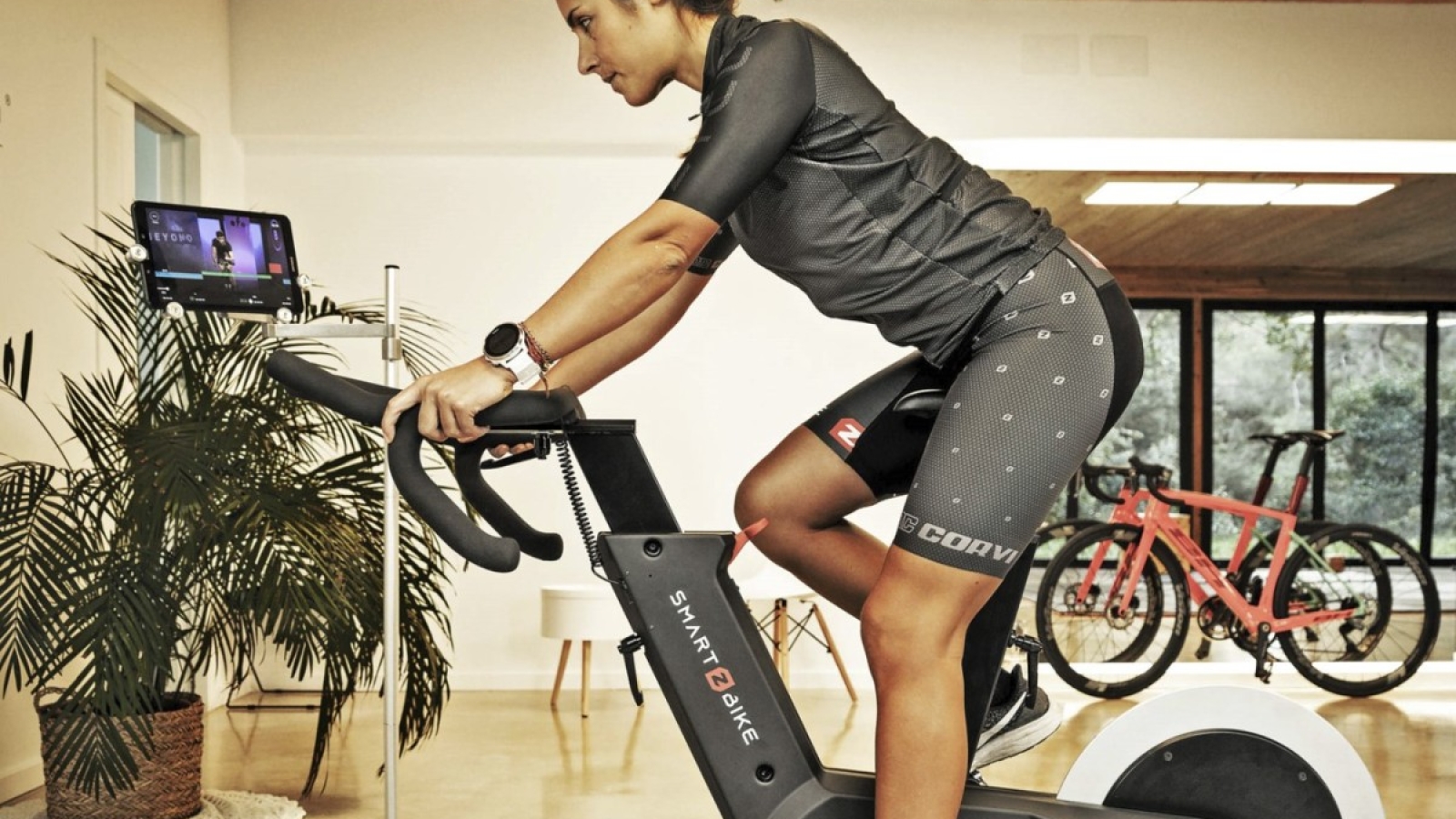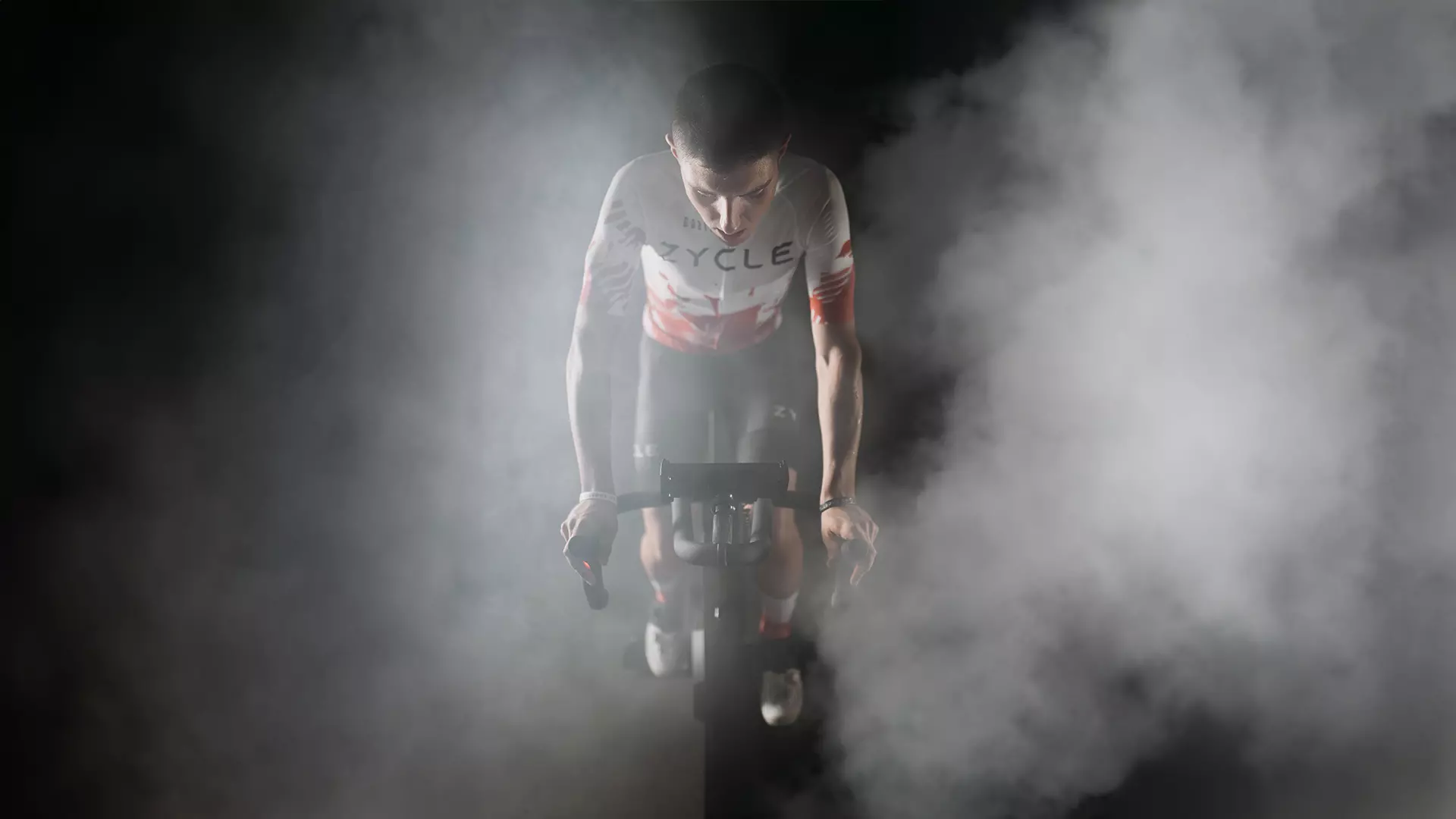Maintaining the correct posture on the bike is essential to avoid discomfort and major problems in our back, whether we go out with her to ride routes, how if we make use of an indoor bike at home. In this article we are going to give you the guidelines that you should take into account to maintain a correct posture on an exercise bike, specifically on an indoor bike. Keep reading to learn more!
Correct exercise bike posture: exercise bike height

The first and most important thing to consider is the height of your indoor exercise bike. Now, how high should the seat of the bike be? To adjust the height of the exercise bike you must take into account two aspects, the height of the seat and the height of the handlebars. Let’s see:
- Seat height of the exercise bike: To obtain the ideal measurement, stand next to your bike and check that the saddle is at the height of the intersection between the femur and the hip. Then sit on the saddle and place your feet on the pedal. Then check if you can fully extend your knee or if it stays bent. You can also check by raising the pedal to see if at maximum height it is at the same level as the hip joint or slightly below.
- Handlebar height: The saddle height should be on a par with the handlebars, otherwise you will strain the muscles of the back and arms and that will generate discomfort in the long run. In this case you should make sure that the handlebars are at the same height as the saddle. However, there are exceptions. If you are a beginner, suffer from physical problems (such as back and lumbar pain) or are pregnant, then raise it a little above the saddle. The handlebars should allow a comfortable posture for your arms, without being fully extended, and a secure grip.
How to improve indoor cycling posture

Now that you know at what height should be the seat of the bike, let’s explain other aspects that are important to adopt a correct posture for exercise bike, mainly indoor type.
Exercise bike posture: distance from the saddle to the handlebars
The distance from the saddle to the handlebars is a measure that is also very important to improve our posture on the bike. Not all bicycles give us the possibility of adjusting it, it all depends on the model and brand, however, if you can adjust it, the ideal is that you take into account the distance that goes from the elbow to the fingertips with the hand outstretched. The most forward ball joint (with the cranks parallel to the ground) should be in a straight line with the pedal axle.
Upright cycling: working with the right load
Many people, especially those new to spinning or indoor cycling and cycling, are mistaken in thinking that increasing the load on the exercise bikes will make their legs grow and increase in size. What happens is that these are toned, as well as the buttocks – but they do not increase in size. Therefore, it is essential to work with the right load because if it is too low you will end up dancing on the bike and this can cause injuries to knees and various muscle groups, as we will be unable to maintain an upright posture on our bike. Of course, you should never use the indoor bike without a load.
How to improve cycling posture: technique
The pedaling technique has a great influence on the posture we adopt when cycling on the road or mountain bike and indoor cycling, and it is very important that we take this into account to avoid discomfort and damage to our back and joints. We recommend that you take the following into account:
- When pedaling while standing, try to bring your hips backwards. You have to feel the saddle at the level of your buttocks.
- Don’t lower your head, but don’t lift it too high either. You can change your position slightly to avoid straining your neck muscles.
- Avoid pedaling with your legs wide apart, as this can cause hip injuries. As a reference, keep in mind that your knees should be parallel.
- Do not pedal with a piston (or in an irregular manner). It is important to ride smoothly and steadily (round).
- Your knees should always be slightly bent with your feet parallel to the ground.
- Do not bounce on the saddle. Ideally (to improve your endurance and pedaling strength) follow the cadence and maintain an upright back position. This will also activate your abdominals.
- Relax your shoulders and arms, otherwise you will end up suffering from a contracture due to the tension they have to bear.
- The body should move in unison, like a block. Avoid, above all, that the trunk goes on one side and the legs on the other. You should also avoid the swaying of the hips.
Frequent errors and how not adopting a correct exercise bike posture influences the exercise bike
As we mentioned above, not maintaining the correct posture for cycling or spinning exercise bikes can cause discomfort and pain in the back and joints. However, it is not the only thing, keep in mind that the height of the saddle and handlebars has a great influence:
- If the saddle is too high: It can lead to Achilles tendon tendonitis and overload the back in the lumbar and hip area.
- If the saddle is too low: You can suffer pain or discomfort in the front of the knee by generating more stress on the kneecap.
- If the saddle is too far forward: It generates tension in the lower back and buttocks, besides being very annoying.
- If the saddle is too far back: This can lead to Achilles tendon tendonitis and overload the back in the lumbar and hip area.
- If the handlebars are too low: If the handlebars are too low, the back muscles and arm extensors work harder. They can become overloaded.


 El carrito está vacío
El carrito está vacío 

